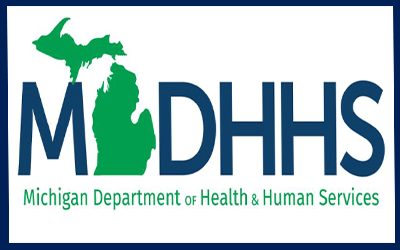A visit to a reflecting pond
 |
|||
– Showcasing the DNR – |
|||
|
 |
|||
– Showcasing the DNR – |
|||
|


FOR IMMEDIATE RELEASE
May 27, 2021 Kurt Weiss, [email protected]
Gov. Whitmer announces school fundi Plan eliminates funding gap between schools
LANSING, Mich. — Gov. Gretchen Whitmer announced today her funding priorities for K-12 education as the state readies for major investments in our schools and teachers. Due to the American Rescue Plan and the recently announced state revenue increases, a surplus in funding now exists to make unprecedented investments in our schools, with enough funding to eliminate the funding gap that has existed between schools for many years.
“Right now, we have an unprecedented opportunity to help each and every student recover academically, mentally, and physically,” said Governor Gretchen Whitmer. “As we emerge from the pandemic and begin our economic recovery, we must work together to provide equitable school funding, attract and retain top talent, facilitate post-secondary transitions, and build stronger, safer schools. With the resources we have available to us thanks to federal aid and a state surplus, we can making lasting, transformative investments in our kids and schools that will have positive impacts for generations.”
In just a year, Michigan has gone from a nearly $3 billion deficit to a $3.5 billion surplus, with a state budget that is primed for investment.
“There isn’t a governor in the country who could have predicted the challenges that lay ahead just over a year ago, but Governor Whitmer has helped lead Michigan through a difficult time and we are now emerging from the public health crisis in a very strong financial position,” said State Budget Director David Massaron. “We have a unique opportunity to make investments in education that are lasting and that can better support our teachers and improve outcomes for our students.”
“A once in a century pandemic calls for an unprecedented response,” said Student Recovery Advisory Council Chair Kevin Polston. “This historic investment into our education system will support a brighter future for Michigan’s children. The Student Recovery Advisory Council Blueprint for a Comprehensive Recovery lays out evidence-based plans for school leaders and policymakers to make the best use of funds.”
The framework announced today by Gov. Whitmer puts hundreds of millions of dollars toward student academic recovery and mental health, with funding to attract and retain talented teachers, school psychologists, counselors, social workers, and nurses. It also delivers on a decades-old goal of equitable funding so that every district receives the same per-pupil amount to ensure equality regardless of what school a student happens to attend.
“Governor Whitmer has had the backs of educators throughout the pandemic and now is the time for educators to have the Governor’s back with her efforts to release the necessary funding to help teachers educate our students next school year,” said Rick Meeth, president of the Bay City Education Association.
Major highlights of the framework include:
Other notable pieces include:
The plan utilizes the surplus to propose over $1.7 billion in one-time funding and allocates over $900 million for ongoing investments, representing Michigan’s most significant investment in public education to date.
“As a dad with young kids, I know how stretched thin working parents are especially as COVID has brought to light so many underlying economic, health, and social issues in Michigan,” added Lt. Gov. Garlin Gilchrist. “And as I think about my own children’s future, I want them to have the best possible education with all of the resources and support they need. With the billions we hav
|

Press Release FOR IMMEDIATE RELEASE: May 27, 2021 CONTACT: Lynn Sutfin, 517-241-2112, SutfinL1@ MDHHS recommends Michiganders avoid foam on lakes and rivers LANSING, Mich. – As the summer months approach, the Michigan Department of Health and Human Services (MDHHS) is issuing its annual recommendation that Michiganders should avoid contact with foam they may see on Michigan waterbodies such as lakes, rivers and streams. The foam may have unknown chemicals or bacteria in them, so it is recommended to avoid contact. Foam can form on any waterbody, but foam on some waterbodies may have high levels of per- and polyfluoroalkyl substances (PFAS). PFAS-containing foam tends to be bright white in color, is often lightweight and may pile up like shaving cream on shorelines or blow onto beaches. Naturally occurring foam without PFAS tends to pile up in bays, eddies or at river barriers such as dams. Naturally occurring foam is typically off-white and/or brown in color and often has an earthy or fishy scent. If contact with foam is made, care should be taken to rinse or wash it off as soon as possible, particularly if PFAS contamination is suspected in the waterbody. The longer that foam remains on the skin, the greater the chance of accidentally swallowing the foam or the foam residue left behind. “Although current science shows that the risk of PFAS getting into your system from contact with skin is low, you can minimize exposure to PFAS by rinsing or showering after you are done with your recreational activities,” said Dr. Joneigh Khaldun, chief medical executive and chief deputy for health at MDHHS. “In general, washing hands and rinsing off after recreating will help to protect people from chemicals and bacteria that may be in waterbodies.” PFAS are emerging contaminants, and the state is working to identify all waterbodies that have been affected. Health advisories have been issued for specific waterbodies where PFAS-containing foam has been found in the past. These specific advisories can be found in the “PFAS Foam on Lakes and Streams” section of Michigan.gov/PFASResponse, under “Testing.” MDHHS continues to evaluate surface water and foam data as it is available and will issue future advisories as needed. MDHHS’ recommendation to avoid foam on waterbodies is for people of all ages, including young children. An MDHHS evaluation suggests young children could have PFAS exposure that may increase their risk of negative health effects if they have repeated contact with foam containing high amounts of PFAS for a few hours a day throughout the recreational season. Contact with surface water, including swimming or other recreational activities in waterbodies containing PFAS is not a health concern. PFAS-containing foams typically have a much greater concentration of chemicals than what is found in the water itself. The Michigan Department of Agriculture and Rural Development also recommends that people do not allow their animals – especially dogs – to come into contact with or swallow the foam. Dogs and other animals are at risk of swallowing foam that has accumulated in their fur when grooming themselves. All animals should be thoroughly rinsed off and bathed with fresh water after coming into contact with PFAS-containing foam. Pet owners with questions related to their animals and foam ingestion should contact their veterinarian. More information on PFAS-containing foam can be found under the “PFAS Foam” section at Michigan.gov/PFASResponse. If you have questions about exposures to PFAS and/or foam, call the MDHHS Environmental Health hotline at 800-648-6942. |
|

FOR IMMEDIATE RELEASE May 26, 2021
Media Contact: Matt Helms 517-284-8300
Customer Assistance: 800-292-9555
Michigan.gov/MPSC
Twitter
As restrictions related to the COVID-19 pandemic are eased and economic activity rebounds, Michiganders can expect higher gas prices in summer 2021 than they were a year ago, but overall projections on energy supply and demand remain uncertain as the state continues to adjust to the impacts of the pandemic.
Higher expected gasoline prices are one of the key findings of the Michigan Public Service Commission’s Michigan Energy Appraisal Summer Outlook 2021, an annual report that in more normal times provides a short-term view of the MPSC Energy Security Section’s expectations for energy supply and demand. COVID-19 and its deep impact on lives and the economy has upended such projections, owing to lagging data and uncertainties about COVID’s future impacts on energy use and consumption patterns.
Here’s a look at the report’s main conclusions across energy sectors for summer 2021.
ELECTRICITY
NATURAL GAS
PETROLEUM
GASOLINE
DISTILLATE FUELS
This year’s report also highlights two key issues that will continue to receive attention from the MPSC:
For information about the MPSC, visit www.Michigan.gov/MPSC, sign up for its monthly newsletter or other listservs, or follow the Commission on Twitter or LinkedIn.